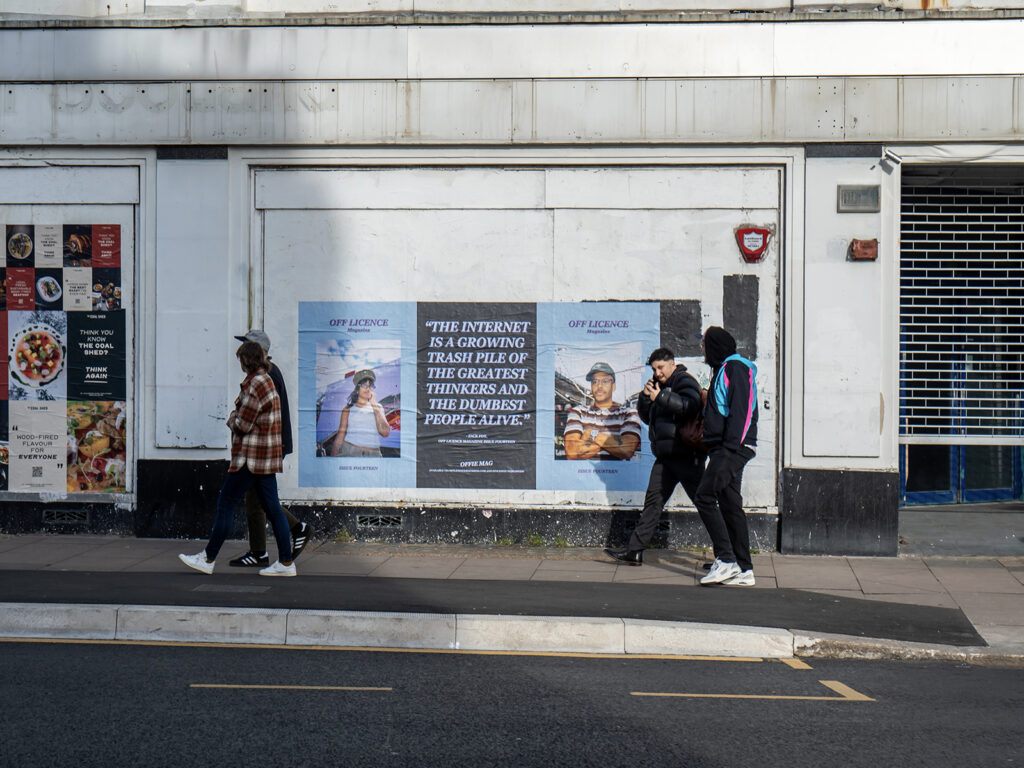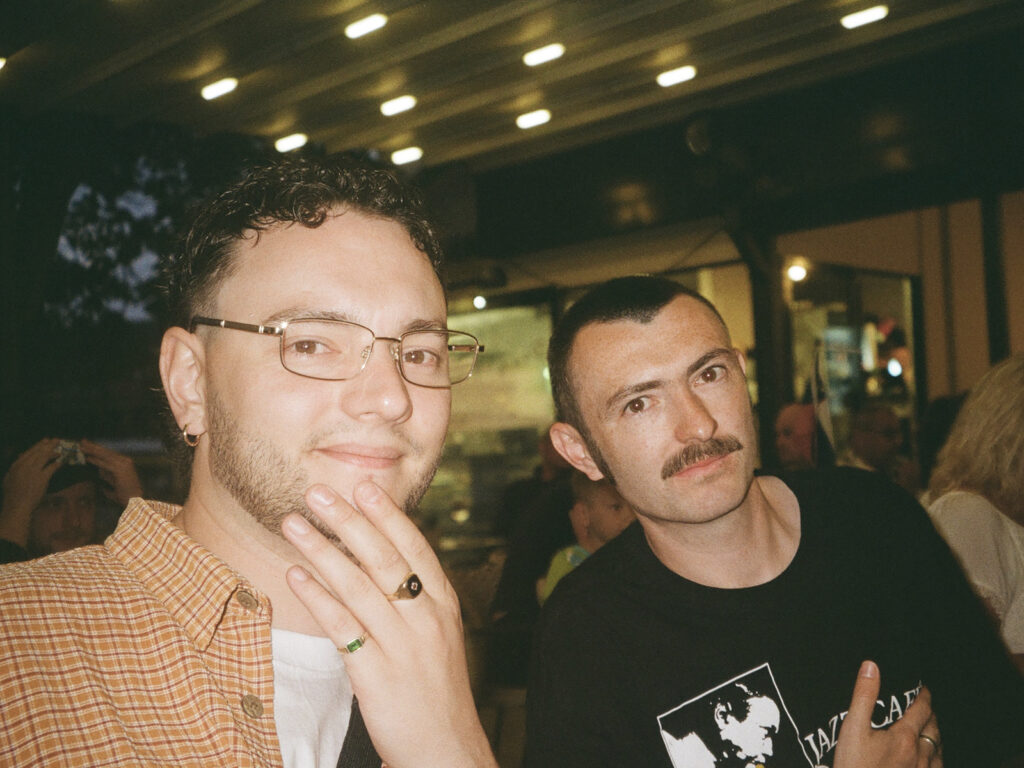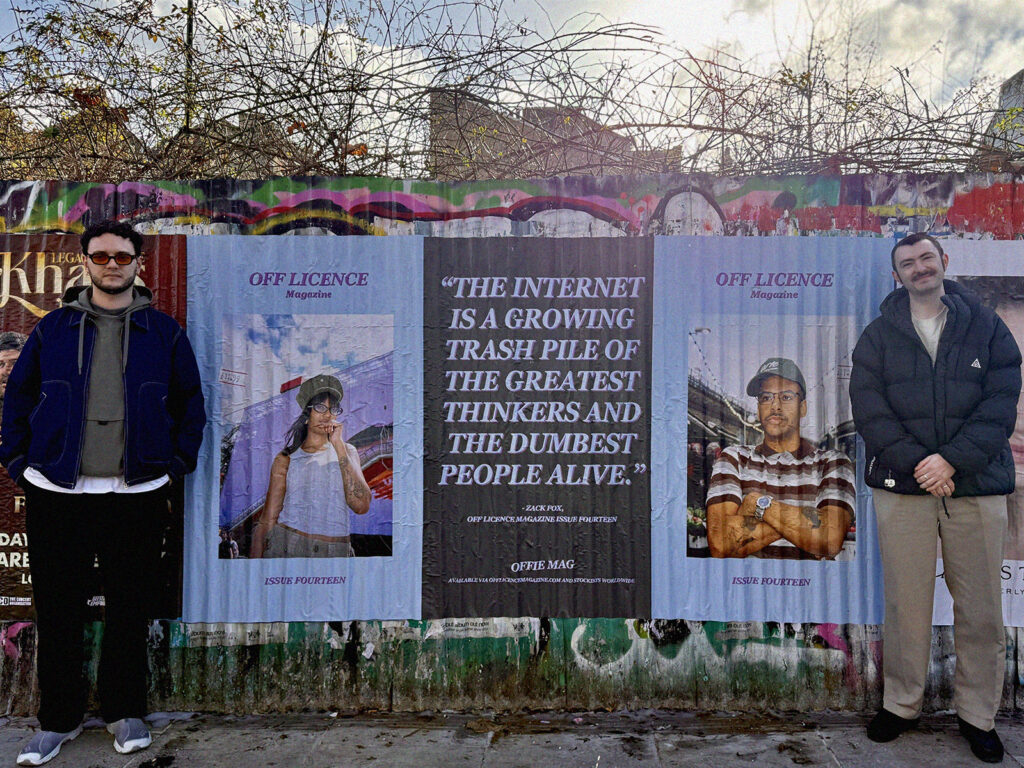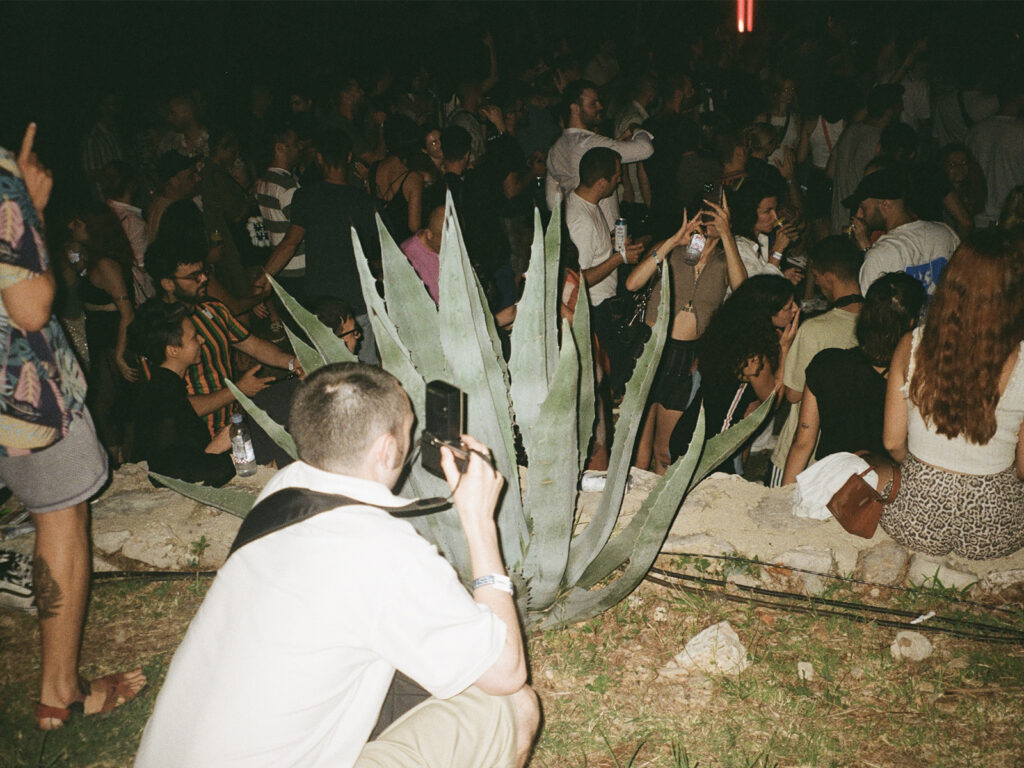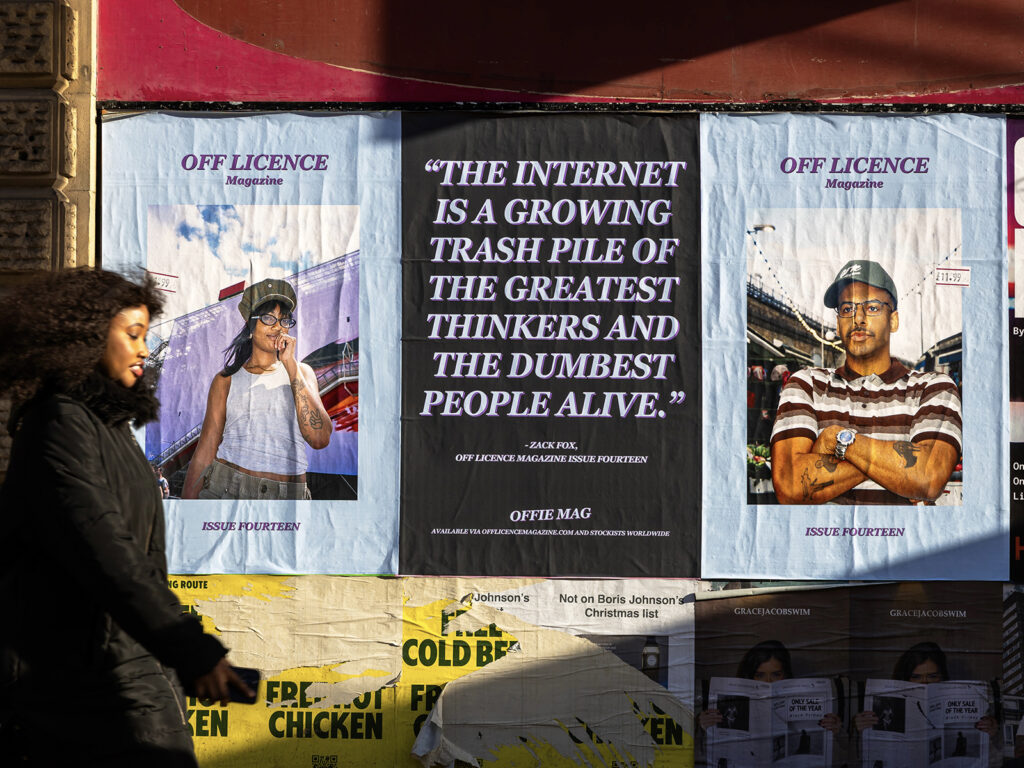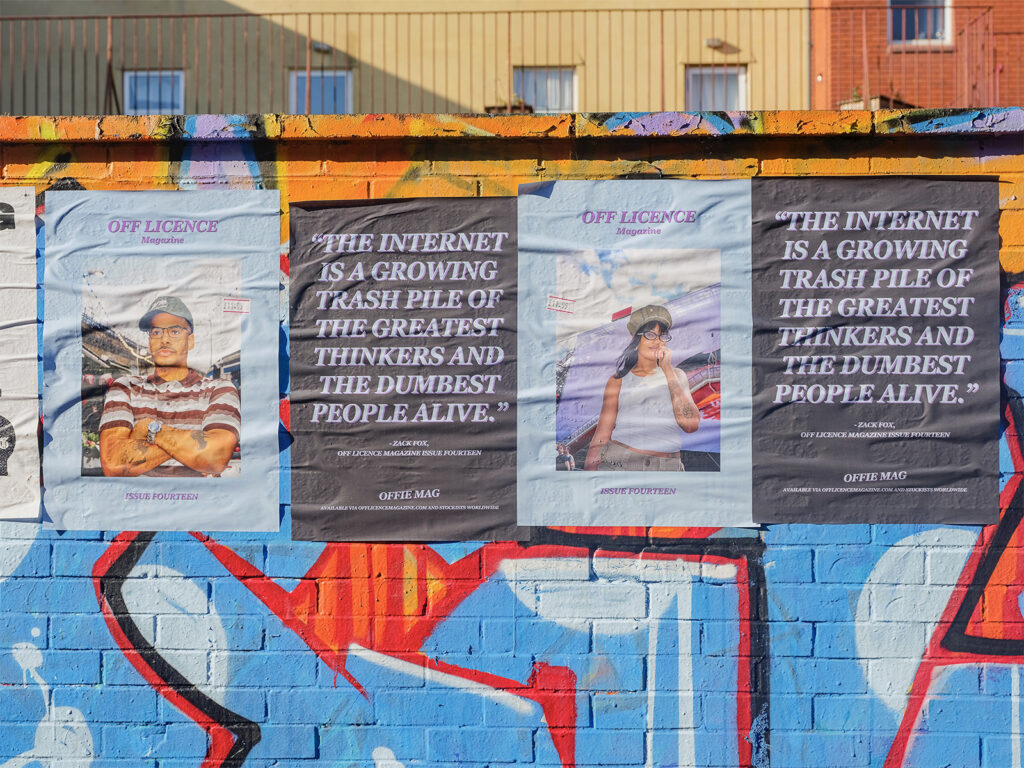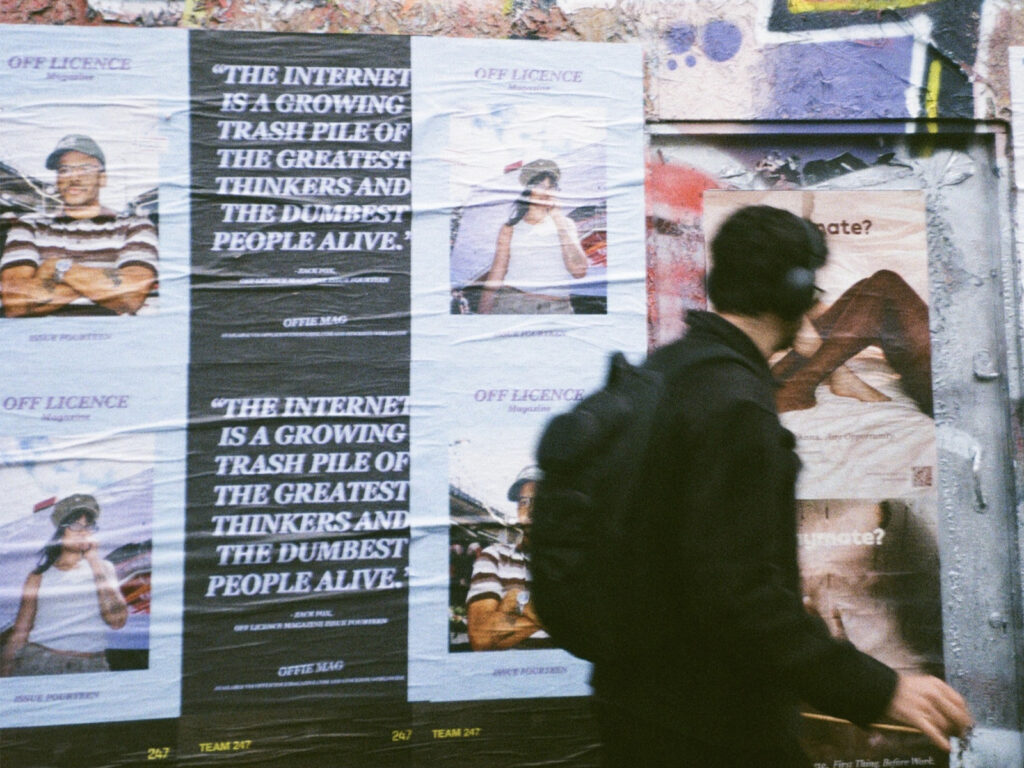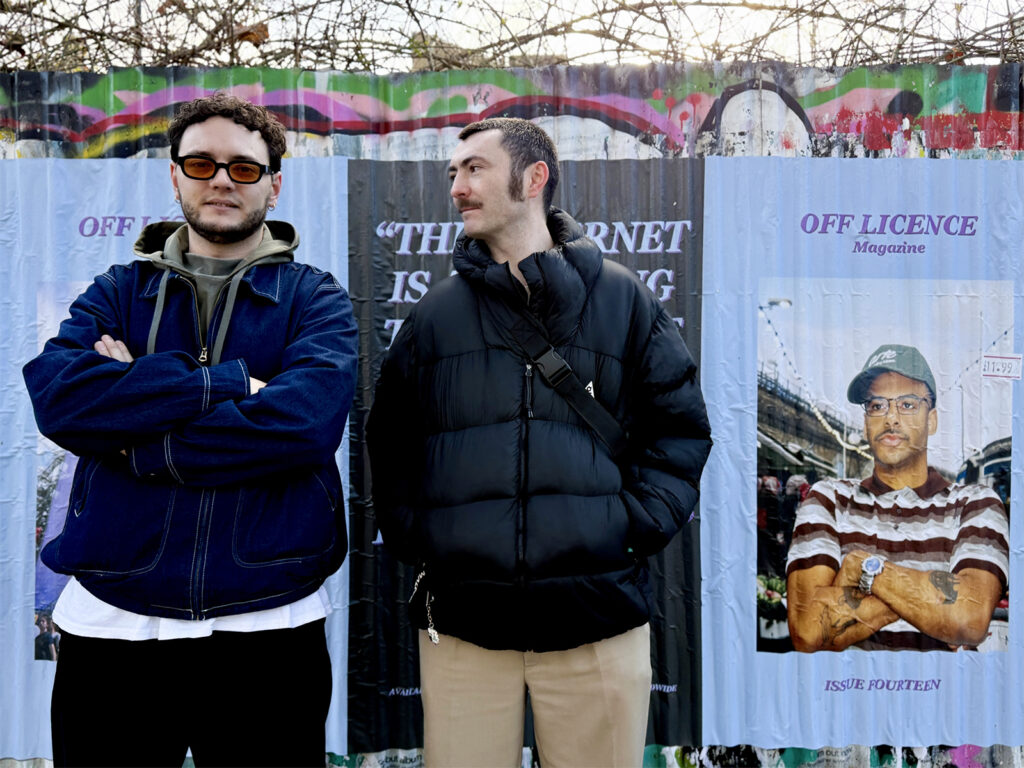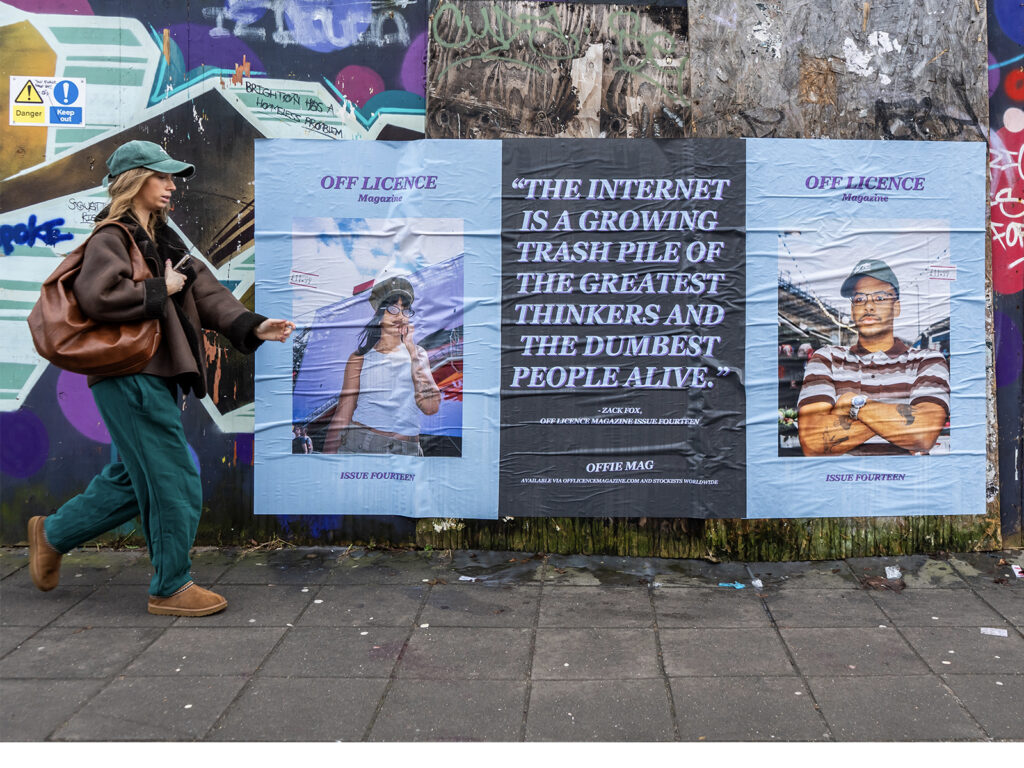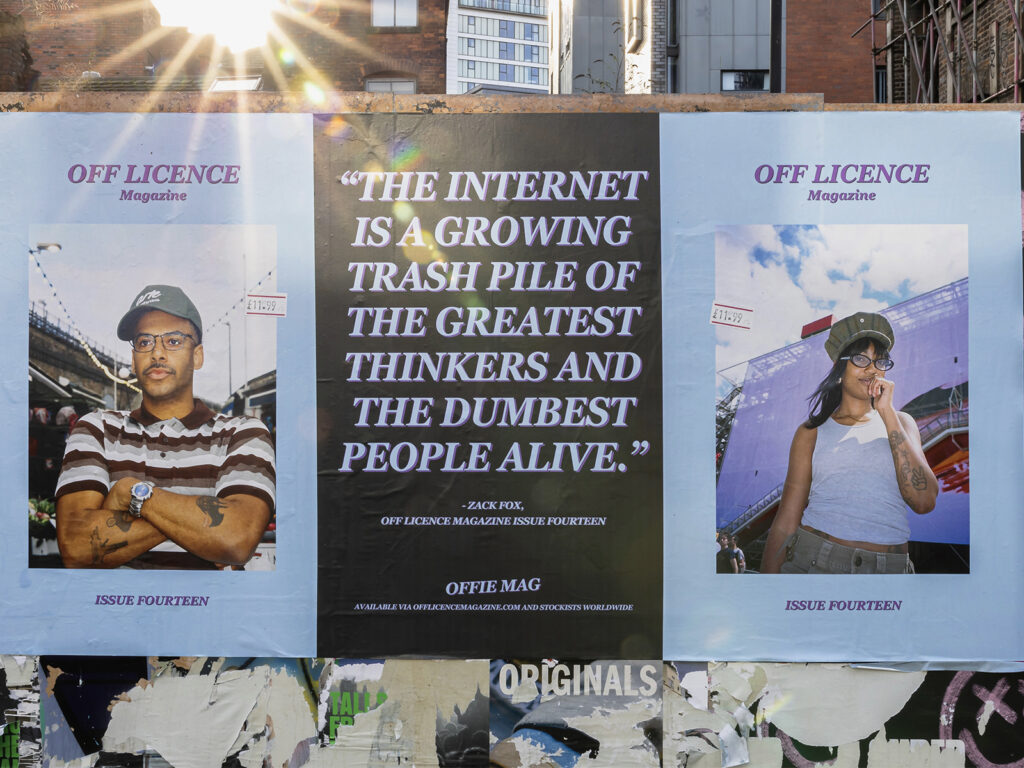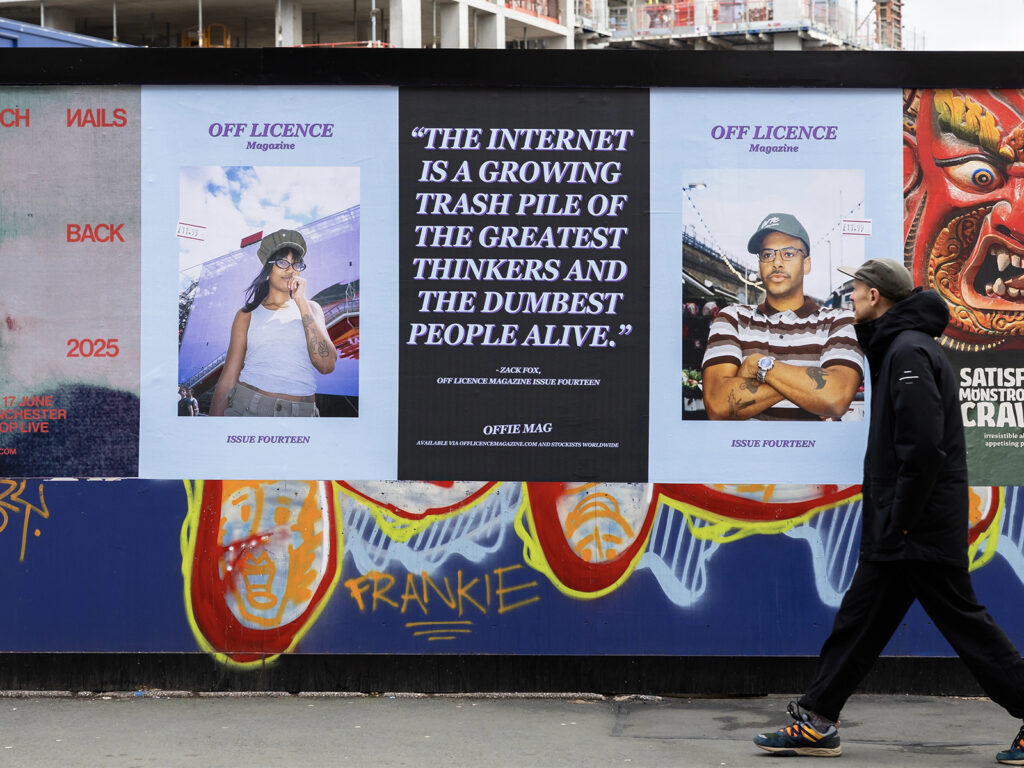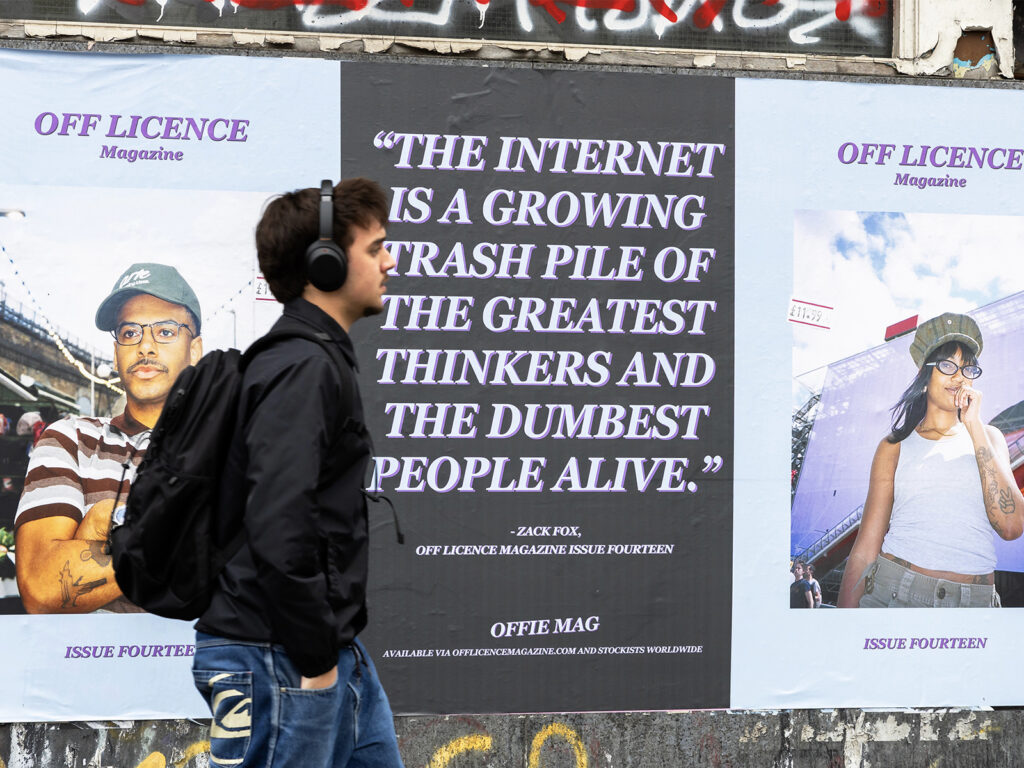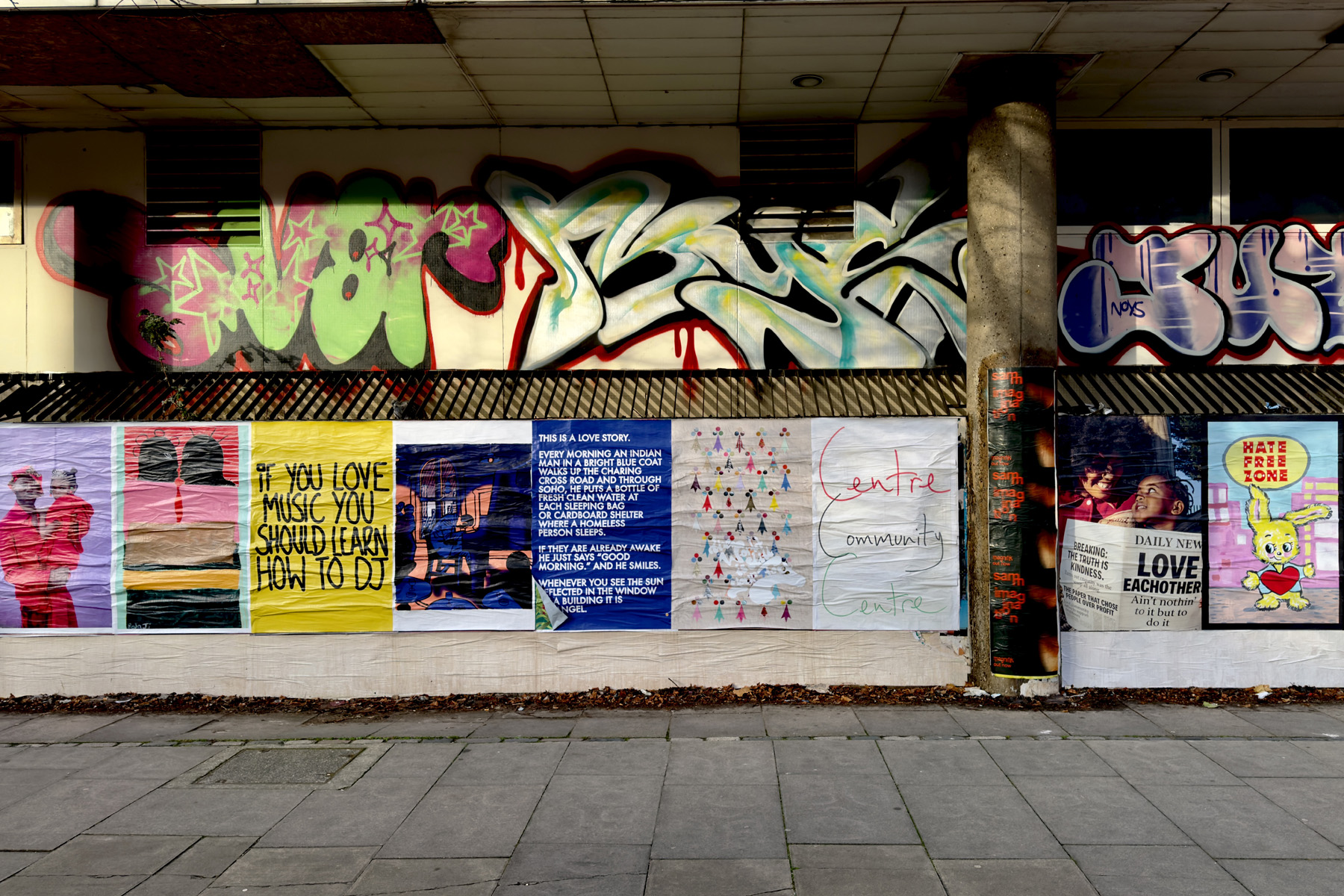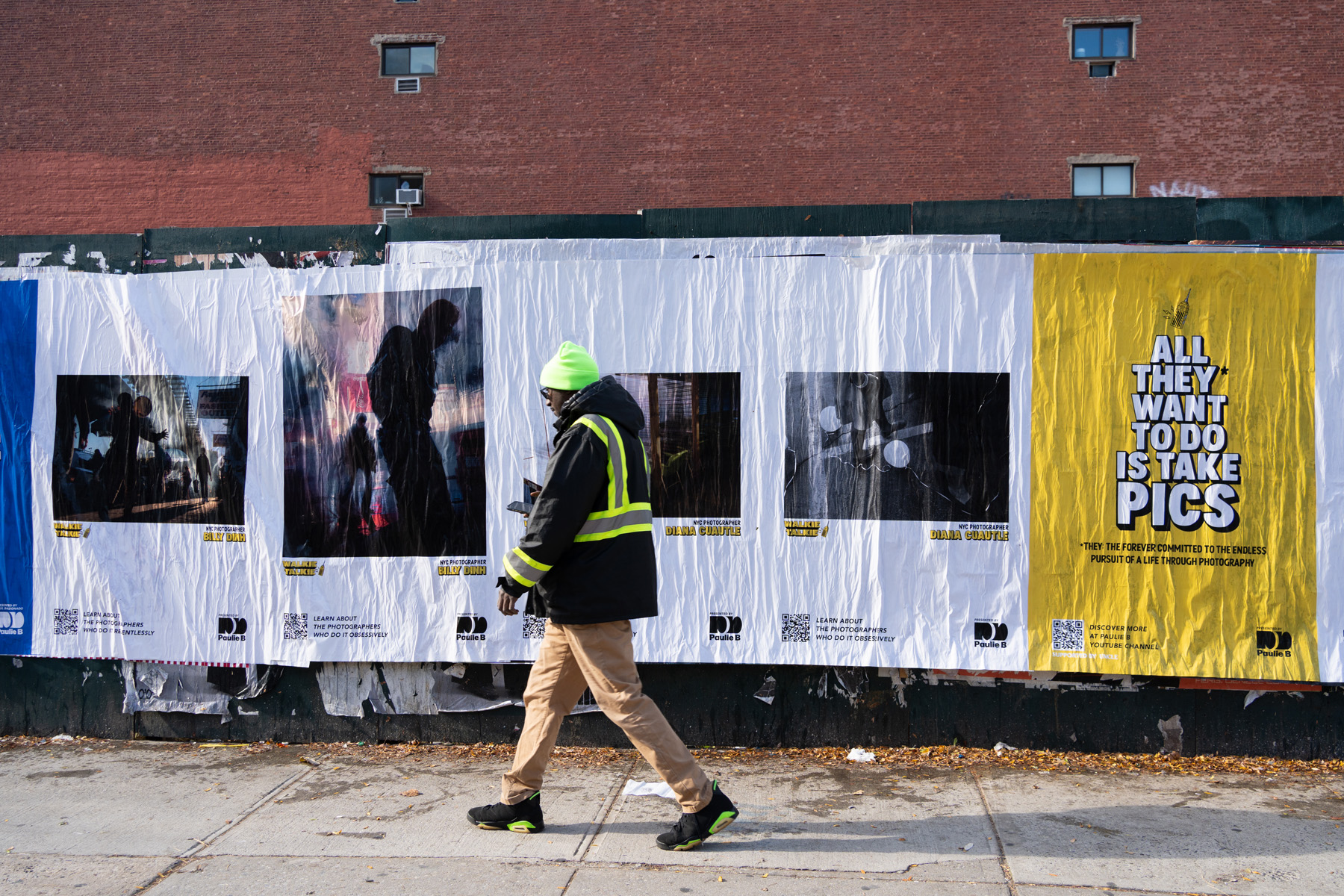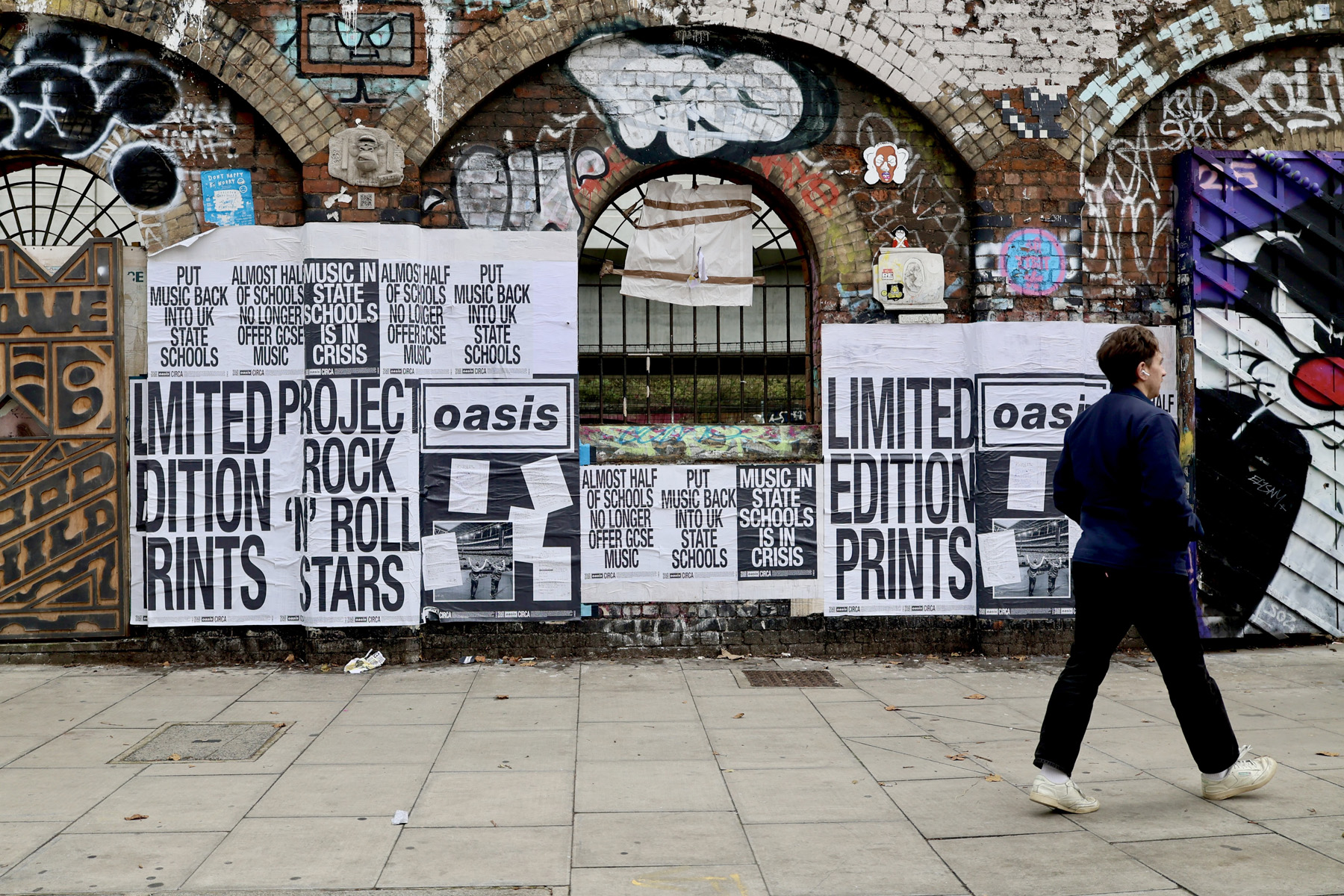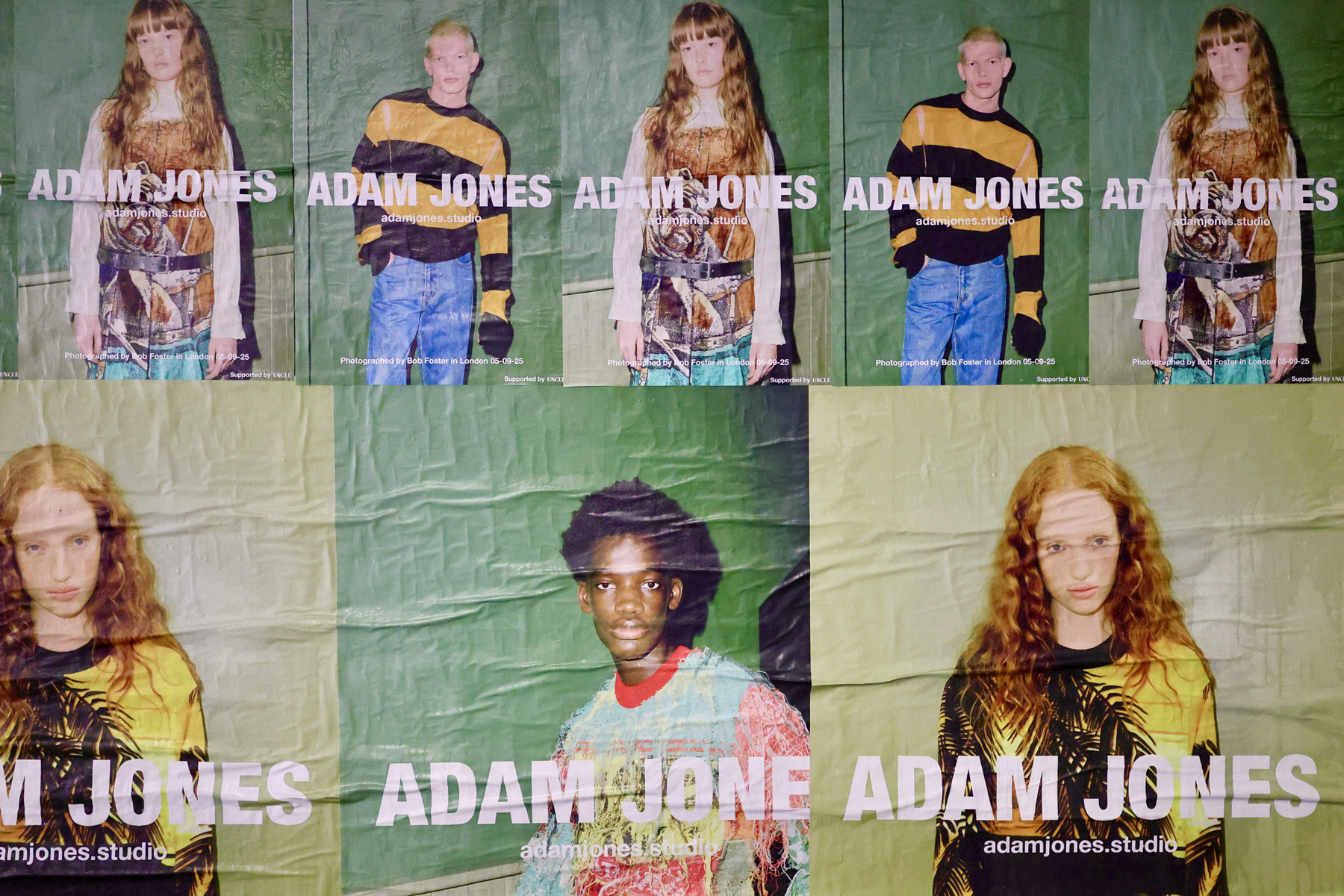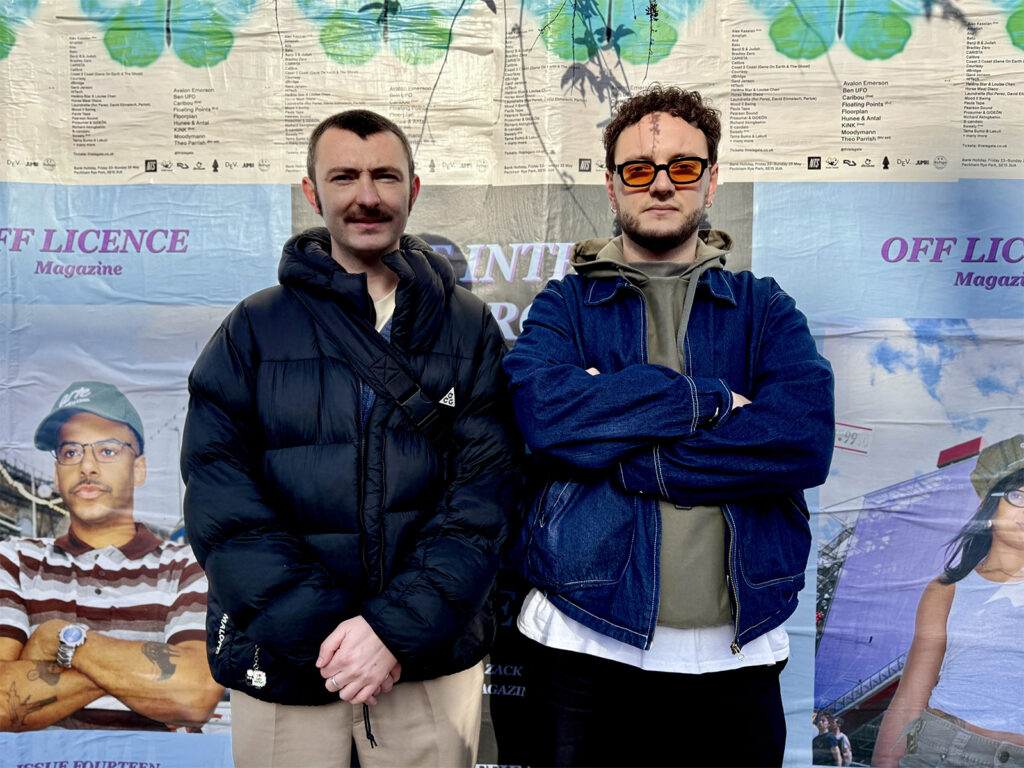
Off License Magazine has built its name by championing independent music, underground culture, and the creatives pushing boundaries. With Issue Fourteen, the mag turns its focus to something inescapable – the internet. From the rise of social media to the dominance of streaming platforms, the digital world has reshaped how artists create, connect, and survive. This issue isn’t just about the online age – it’s about navigating it. The highs, the lows, and everything in between.
To take the conversation beyond the page, Off License has teamed up with UNCLE for a flyposting campaign, bringing the cover art and standout quotes from the issue to Brighton, Bristol, London, and Manchester – making sure the dialogue lands where it matters most.
At its core, Off License has always been about giving independent voices the space they deserve. Whether it’s through carefully selected cover stars or the stories inside, the magazine stays committed to quality over clickbait. In a landscape where digital noise often drowns out authenticity, Off License keeps its focus sharp – real voices, real stories, and an unfiltered look at the culture that matters.
To understand how Issue Fourteen came together and why the internet was an inevitable theme, we spoke to Editor-in-Chief Greg Stanley about the magazine’s evolving vision, the challenges of the digital age, and what the future holds.
WHAT INSPIRED YOU TO FOCUS ON ‘THE INTERNET’ AS THE THEME FOR ISSUE FOURTEEN?
It’s hard to pinpoint one specific thing that inspired us to focus on The Internet as the theme for Issue 14. It had been sitting on our Google Doc of good ideas for a while, and I think, to some extent, it grew out of frustration—at least for me as editor-in-chief. While we always encourage everyone involved in the magazine to interpret the theme in their own way, my perspective on it was probably shaped by a sense of social media burnout.
In the six years we’ve been running Offie Mag, the social media landscape has changed drastically. The shift in what kind of content performs well directly impacts us—not just in terms of reach, but in how many people see the magazine and the artists we’re trying to platform. We built a lot of our audience and sales through still imagery, particularly film photography, which used to be a really effective way to grow. But as things moved toward short-form video, adapting to that shift became a challenge. So, in some ways, the decision to focus on The Internet was driven by a mix of inspiration and frustration—often a great motivator for writing.
That being said, the issue isn’t just about the negatives. We wanted to explore both sides. If it weren’t for the internet, Offie Mag wouldn’t exist, nor would the community of readers we’ve built. Many of the musicians and artists we’ve featured in this issue share that same dual perspective—the internet has brought opportunities but also new struggles.
I also have a background in journalism, and while a lot of what I studied still holds relevance, some of it already feels outdated. When I was at university, we weren’t preparing for this ultra-short-form video era we’re in now. The media landscape has shifted so rapidly that traditional teachings struggle to keep up.
Ultimately, The Internet felt like the right theme at the right time because it reflects so much of what we, and the artists we platform, are experiencing—both the highs and the lows. Like most things, the online world mirrors the offline one, bringing all of its evils and all of its good. The theme came together as an amalgamation—or maybe more fittingly, an algorithm—of all of the above.
CAN YOU SHARE THE STORY BEHIND SELECTING THE COVER ARTISTS FOR THIS ISSUE?
The way we pick cover stars is pretty simple—we think about artists we love, track down a contact, and hope they’re up for it.
Liv.e was someone I’d wanted to interview for years, but we used to do all our shoots in the UK, so I was waiting for the right time. Then I listened to Past Futur.e and thought, nah, let’s just go for it. She had a small show in Paris, we had good connections there, and Lucy Cullingworth was available to shoot—so it all lined up. Given her independent approach to music, she fit The Internet theme perfectly.
With Zack Fox, my partner Fez actually suggested him after we kept watching his DJ sets on YouTube. At first, I was like, yeah, right, because he’s been on some huge magazine covers. But he really fucked with the ethos of Offie Mag, and The Internet theme felt like a good excuse to aim for an artist with a bigger platform than we usually go for. Plus, I just think his music is really interesting—his Wood Tip EP is way more introspective than the chaotic energy of his DJ sets.
What ties them both together is that they’re genuinely hilarious online—whether it’s memes, captions, or actual directed content—but in their music, they can be really sincere. That contrast feels like the perfect way to express both sides of the internet.
HOW DOES ‘THE INTERNET’ THEME INFLUENCE THE CONTENT AND DESIGN ELEMENTS THROUGHOUT THE MAGAZINE?
Our themes can be really specific—like the New York issue, which focused entirely on artists and stories from the city. But The Internet is broader. Since it’s inescapable, every artist we spoke to had something relevant to say.
Content-wise, we covered topics like the pressure on artists to create social media content, our addiction to phones, and the exploitation of independent musicians by streaming services. There’s also a lot of nostalgia in this issue—DaMetal Messiah put together a list of tracks with LimeWire energy, which taps into that early 2000s thrill of discovering music online. Meanwhile, younger artists featured in the mag have never known a music industry without the internet, so we’ve got a really broad perspective.
For design, we didn’t go overboard on Y2K aesthetics, but Daniel Lovrinov created an incredible title page and merch design using ones, dots, and punctuation to spell out “The Internet” and “Offie Mag”—a nod to digital code. We’ve also got Elsa Monteith exploring whether short-form content is killing music videos, which ties the theme together in both the content and visual direction.
WHEN CURATING EACH ISSUE, DO YOU BEGIN WITH A THEME AND WORK FROM THERE, OR DO YOU FIND COMMON GROUND AMONGST CONTRIBUTORS? WHAT IS YOUR CREATIVE PROCESS?
We used to do it the other way around—starting with artists we really wanted to feature and then finding a common thread between them. That’s how Issue 10 got its Renaissance theme—Pink Siifu and Fly Anakin said underground rap was going through a renaissance, and it just clicked. We were also in Paris at the time, which made it feel serendipitous.
But now that we’ve moved to quarterly publishing, we plan themes in advance and then build the issue around them. We reach out to artists and put out calls for pitches that fit our upcoming themes, which helps us stay structured—especially since we now have paid subscribers expecting regular issues.
Some themes are really specific, like New York, where every story had to tie back to the city. Others are looser, like The Internet or Nightlife, where we explored everything from why nightlife matters to how we can support club culture. The themes naturally shape the kinds of artists we feature, and it’s been interesting to see how that’s evolved—our earlier mags were mostly rap-focused, whereas more recent issues have branched into dance music, experimental scenes, and beyond.
HOW AND WHY DID OFFIE MAG GET STARTED?
There are really two answers to this. On one hand, I was finishing university and desperate to get my work out there. I’d been writing for football magazines at the time—still absolutely obsessed with football—but I had a growing urge to write about music and culture, especially independent music. Around 2016-2018, there was a wave of underground hip-hop, rap, and jazz in the UK that wasn’t being covered in much depth. If publications were writing about it, they weren’t digging into it the way I wanted to.
So, Offie Mag started as a way to bypass the industry. I wasn’t great at pitching, I had no industry connections, and rather than waiting for an editor to take a chance on me, I figured I’d just start my own platform. At the same time, I was getting more into film photography—my mum had given me her old Olympus Trip 35, a camera my dad had bought her when she was 21. I was taking photos of my mates, nights out, house parties, and the things happening around me. Offie Mag became the perfect mix of the two—writing and photography in one place.
Choosing to print the magazine was another step. I’d seen independent record labels selling small vinyl runs and limited merch, making enough to sustain themselves. That inspired me. There were loads of artists with dedicated fanbases but no in-depth media coverage. Print felt like a way to provide that while also making the magazine financially viable.
From there, it just grew organically. More people wanted to get involved—journalists, photographers, DJs. We launched a radio show at my university station, then moved to a small Brighton station, where the most transformative friendship of my lifetime begun to flourish with Matt Leppier (Brickcellphone), who’s now Offie Mag’s managing editor (pictured!). That led to events, which we kept in line with our ethos—booking small artists, keeping ticket prices low, and focusing on community building.
Initially, Offie Mag’s audience was Brighton-based, but the print magazine gave us a global readership. Financially, it started with what was basically an unofficial grant—I had been accepted for a Master’s in Documentary, and they had already sent my student loan before I decided, literally the day before term started, that I wasn’t going to do it. That money paid for the first print run, and from there, it snowballed into what Offie Mag is today.
DESCRIBE OFFIE MAG IN THREE WORDS.
A real-life magazine. Thank god for hyphens.
HOW DO YOU ENSURE THAT EACH ISSUE RESONATES WITH YOUR AUDIENCE WHILE INTRODUCING FRESH PERSPECTIVES?
We don’t overthink it. By focusing on independent musicians, independent labels, and independently owned establishments, we naturally attract readers who care about those things.
We also ask our contributors to write for themselves first. Since they come from different backgrounds and places, the mag reflects our audience without forcing it. The people making Offie Mag are the target audience, so it feels authentic.
There’s always a chance that someone only buys a mag because they’re obsessed with one cover star, but that’s a risk we take. We don’t rely on just the reach of big names—we trust the longevity of the curation and the stories we tell.
HOW HAS THE CULTURAL LANDSCAPE OF THE UK INFLUENCED THE DIRECTION AND CONTENT OF OFFIE MAG?
How can it not? The biggest influence is austerity—the cuts to public funding that make it harder to be an independent artist, a venue owner, or a creative of any kind.
That financial pressure has shaped everything, but it also reinforces how important music and culture are—not just for entertainment, but for community, connection, and well-being. We cover those struggles, but also the ways people keep creating despite them.
WHAT ARE SOME UPCOMING PROJECTS OR EVENTS THAT READERS CAN ANTICIPATE FROM OFFIE MAG?
I don’t want to say too much… but if Offie Mag started a radio platform, it would probably be the best radio platform in the world.
WHY DID YOU DECIDE TO FOCUS ON PRINT VS. ONLINE?
A few reasons, but my favourite right now is the archival nature of print. Online content disappears in the flood of social media, but print makes things permanent.
There’s something special about knowing that in 10, 20, 30 years, someone might find an issue in a museum, a charity shop, or a car boot sale and get a snapshot of what was happening in independent music and culture at that time. Each mag is a capsule of a moment—something tangible that lives on.
WHY IS PRINT MEDIA IMPORTANT TO OFFIE MAG IN THE DIGITAL AGE?
If we hadn’t gone into print, we’d have just been another Instagram page or blog. Print made people take us seriously.
It also feels more special now that there’s less of it. When a new issue lands on someone’s doormat, there’s a novelty to it. People get excited to hold it in their hands, and that’s something online media can’t replicate.
WHAT ARE YOUR HOPES FOR THE FLYPOSTING CAMPAIGN?
I hope it stays up forever. I hope people who supported us since Issue One or Issue Two see it in their city and think, oh wow, they’re still going, still growing.
And as for the posters themselves? I hope a lot of people see that Zack Fox quote, because he nailed it—
“The internet is just a big old trash pile of the greatest thinkers and the dumbest people of all time.”

